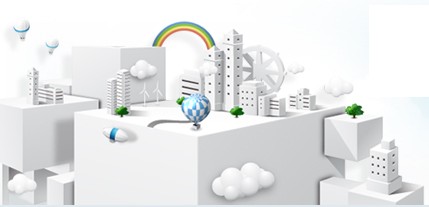Framework Act on Low Carbon and Green Growth in South Korea
The government of South Korea views green technology and green industry as the engine to promote economic growth and create employment opportunity. The "Framework Act on Low Carbon, Green Growth" was announced in January 2010 for clarifying the relevant official organization and the green growth responsibility and characters in industries.

The challenge
According to International Energy Agency, the CO2 emission in South Korea in 2010 was 563 million tonnes, which accounted for 1.9% of worldwide emissions and ranked 7th globally. The per capita emissions were 11.26 tonnes, far more than the average worldwide (4.40 tonnes), and ranked 20th globally.
Lee Myung-bak, the president of South Korea, announced in August 2008 that the "low carbon and green growth" was the new vision for the government, and that S. Korea would be using renewable energy instead of fossil fuels. In order to efficiently make green growth policies, a "Presidential Committee on Green Growth (PCGG)" was established in the same year. Further, the "Framework Act on Low Carbon, Green Growth" was announced in January 2010.
The measure
The action was a top-down strategy, and the government played a vital role in leading and assisting, by setting up a public-private partnership. The South Korean government invested 2% of annual GDP for green investment from 2009 to 2013.
The policy mainly contained:
The set up of regulation and standards on national greenhouse gas (GHG) emission, with a target of 30% less emissions than the business as usual (BAU) scenario by 2020; each sector (industry, electricity, building, transportation, etc) had to set the emission reducing goal in consequenceThe management systems for GHG and energy: setting up a centralized mechanism for managing the manufacturers which emit bulk amount of GHG and energy. In the first stage, Incheon International Airport, Korea International Trade Association, Lotte Department Store, etc, were the main targets.The implementation of a green authentication system: providing incentives for the manufacturers of green technology, green-focused industries; fiscal measures like the exemption for the green commodities from bonus income tax and interest income tax.The support to green industry investment by providing investment subsidies to the companies which invested 60% of their capital in green technology.Regulation on vehicle fuel fee: The efficiency of one litre gasoline for a vehicle must last for at least 17 km, and the standard of GHG emission should be under 140g per kmThe support to green building construction through grant funding programmesSupport to responsible purchasing in public organisation through new public procurement standards.Lessons learnt
The South Korea government strived to set up concrete and strict goals for green growth. For example:
Establishing an integrated networking, like Presidential Committee on Green Growth (PCGG) to facilitate the implementation of the Act.Setting regulatory requirement. The most important one is "Framework Act on Low Carbon, Green Growth"Expediting the green technological research, green industrial investment, and the countermeasures to support key industries.Expanding green growth education at schools.Promoting green growth via TV or other media.It won’t be difficult to find that S. Korea promotes this policy in a comprehensive way which related to each citizen. The main objective to the policy is definitely targeted at industries; however, everyone in the county is under obligation to reduce CO2.
As indicated by UNEP in 2010, the National Strategy for Green Growth represents an integrated and comprehensive strategy for the Republic of Korea to achieve its vision to ‘move away from the traditional “brown economy” growth-at-any-cost model to a green economy model where long-term prosperity and sustainability are the key objectives’.
Further deployment
In 2014, the Ministry of Environment of S. Korea finalised another route map of GHG reduction for the next step of the Act, being scheduled to lower 2.33 tonnes of CO2, which is equal to 30% of domestic GHG emission amount. This route map follows the expected figure that the president announced in 2011. Further, in order to efficiently reduce CO2 emission and prove the resolution, in 2015 S. Korea government pioneers in conducting "Allocation and Trading of Greenhouse Gas Emission Allowances Act" in Asia. Since the concept is validated at full-scale, the maturity of this policy measure is estimated to be 7 on the GML scale.
Links
The Website